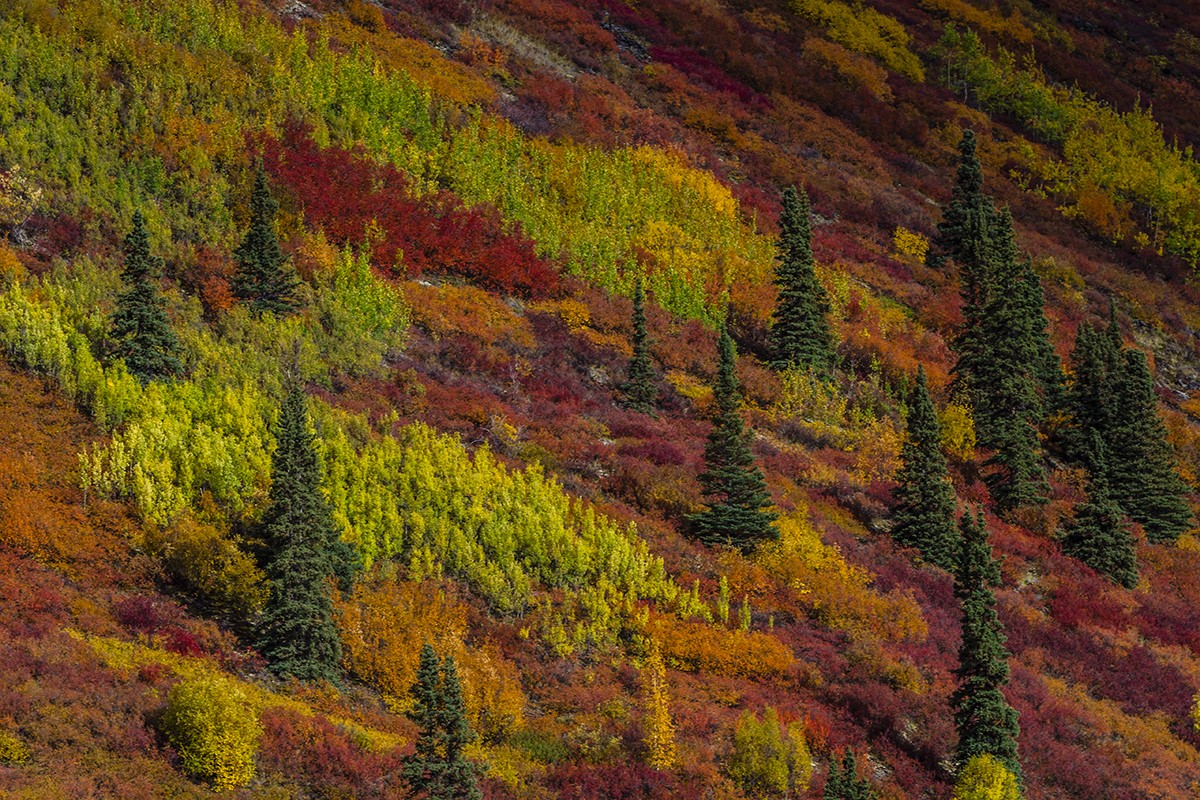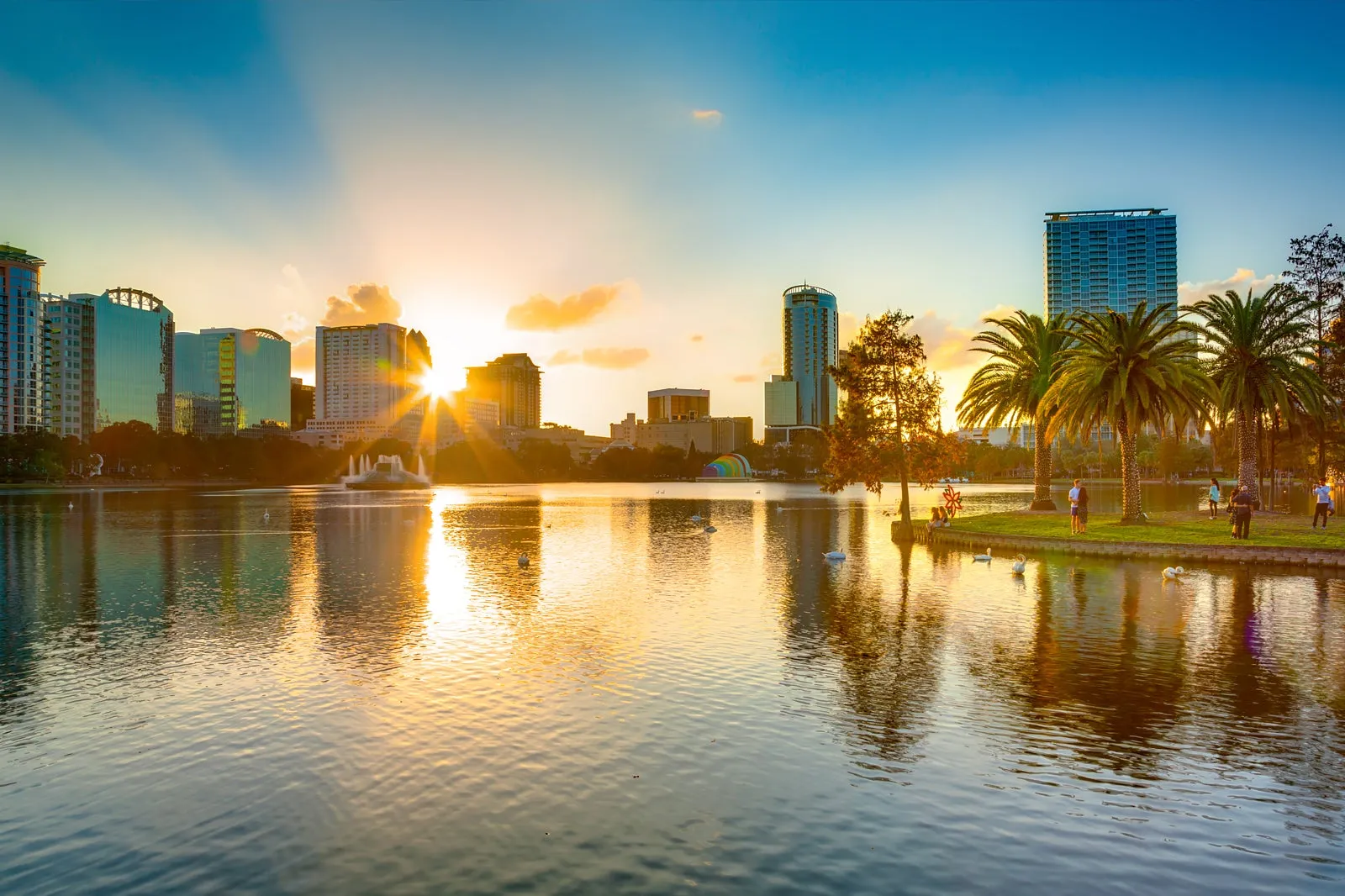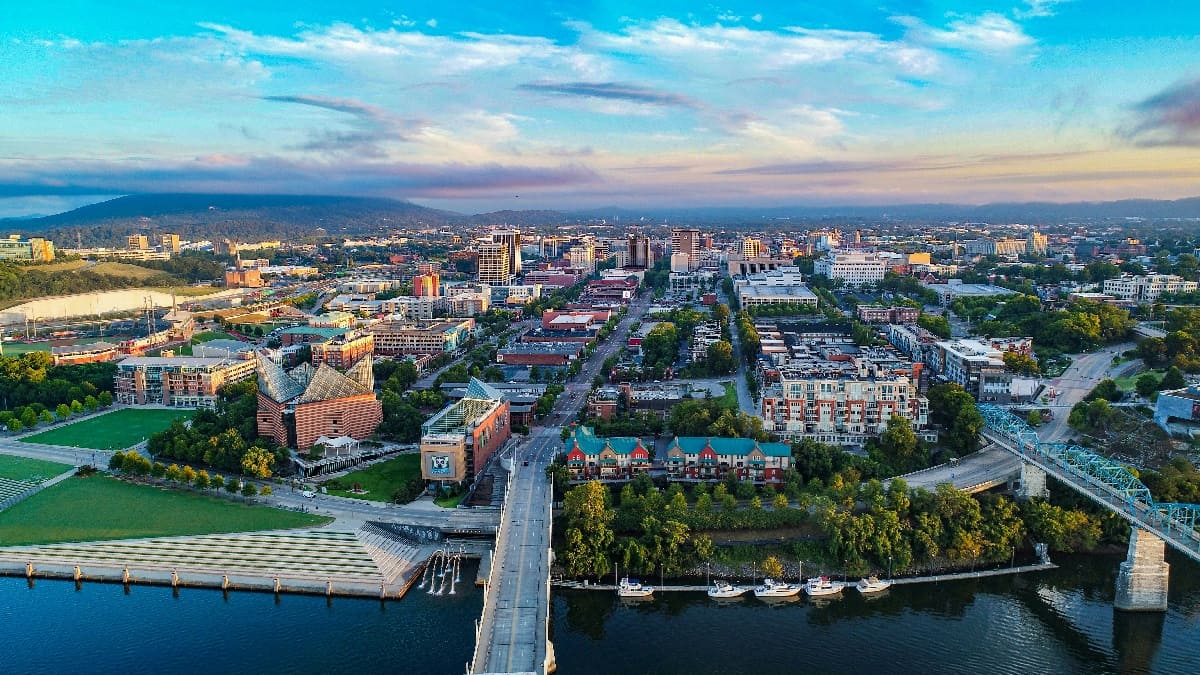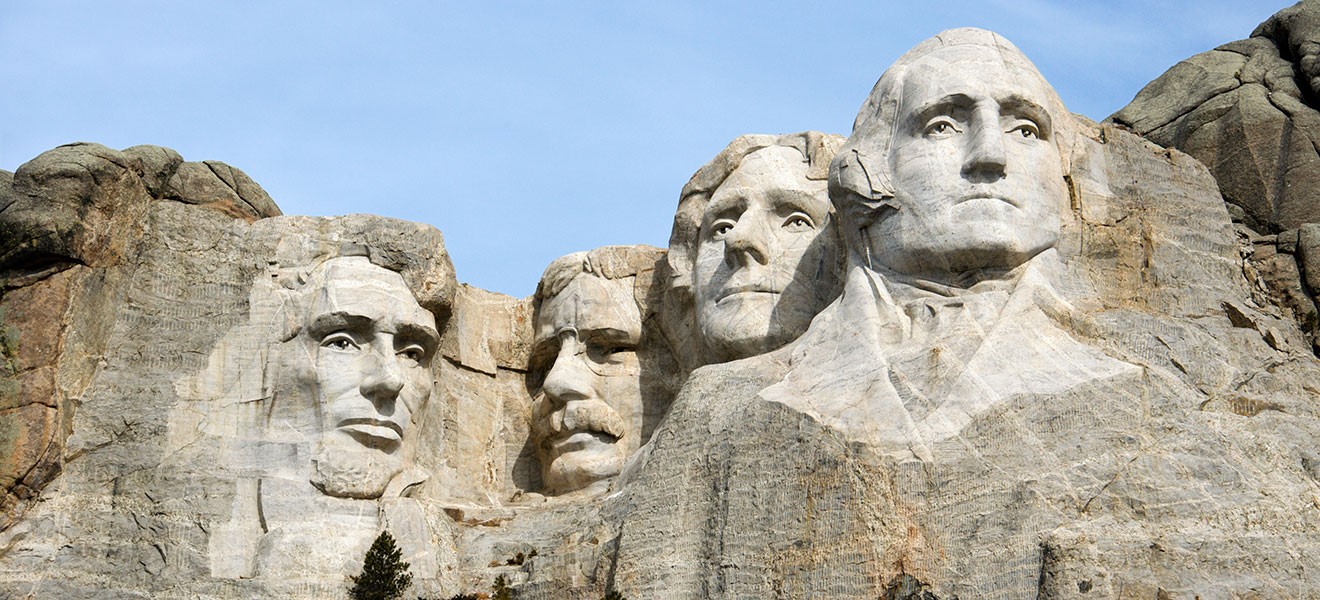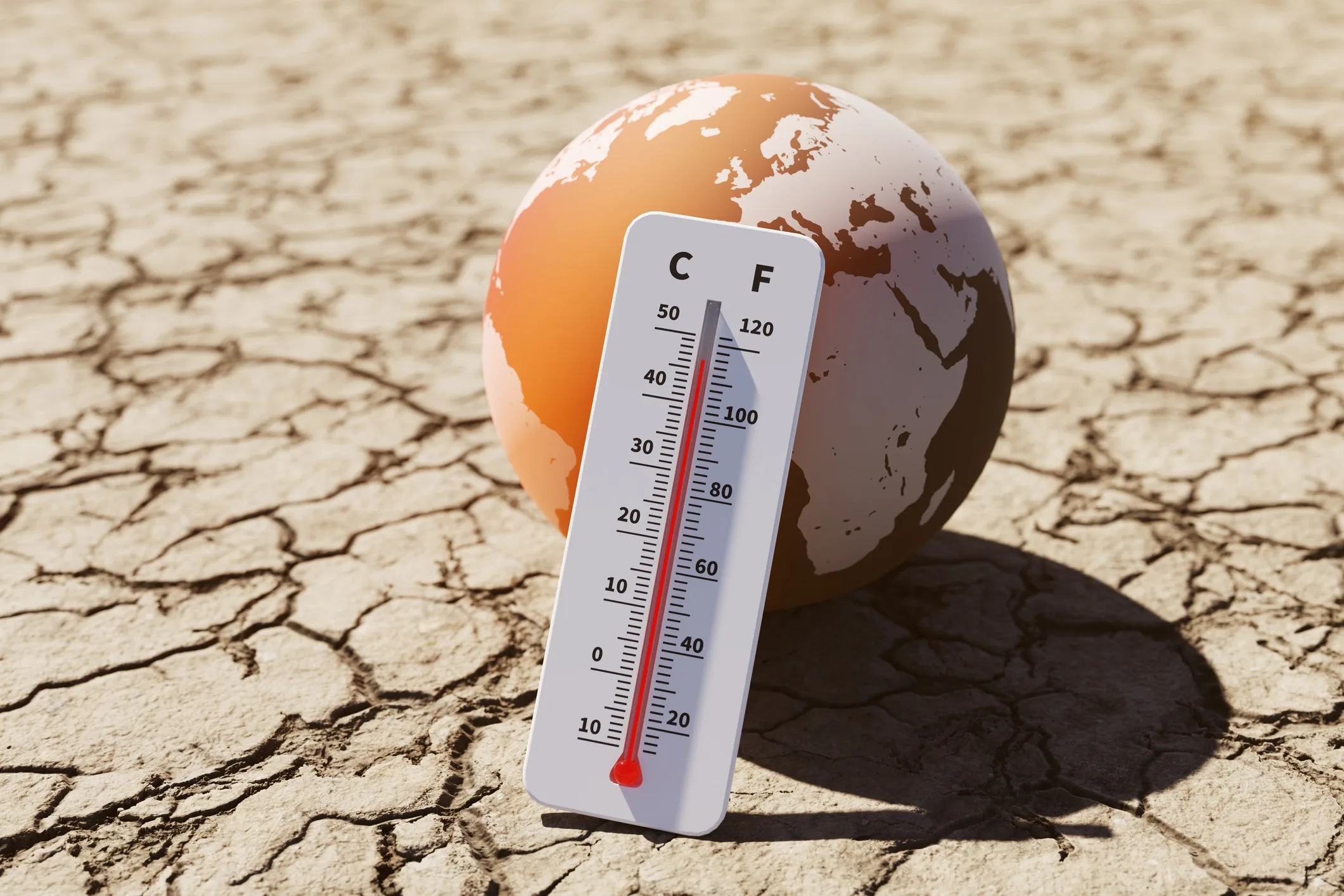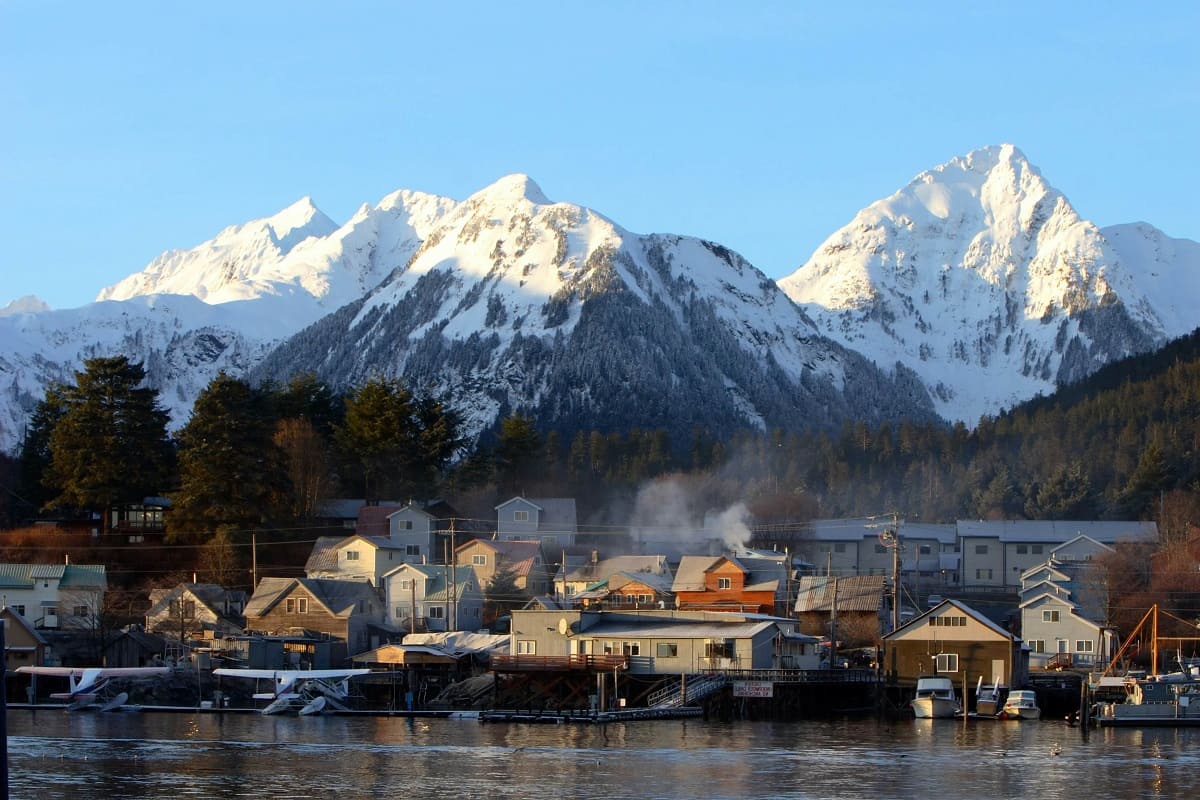Home>Weather and Climate>Average High And Low Temperatures By State: A Comprehensive Guide


Weather and Climate
Average High And Low Temperatures By State: A Comprehensive Guide
Published: March 5, 2024
Discover the average high and low temperatures by state in this comprehensive guide. Plan your travels with valuable weather and climate insights.
(Many of the links in this article redirect to a specific reviewed product. Your purchase of these products through affiliate links helps to generate commission for Temperatures.com, at no extra cost. Learn more)
Table of Contents
Introduction
Weather and climate play a pivotal role in shaping the natural environment and influencing human activities. One of the fundamental aspects of weather is temperature, which fluctuates throughout the year and varies significantly across different regions. Understanding the average high and low temperatures by state is crucial for various purposes, including travel planning, agricultural activities, and infrastructure development.
In this comprehensive guide, we will delve into the average high and low temperatures across the United States, exploring the diverse climatic patterns that characterize each state. From the frosty winters of the Northeast to the scorching summers of the South and the temperate climates of the West, each region offers a unique meteorological tapestry that shapes the lives of its inhabitants.
By examining the factors that influence high and low temperatures, such as geographical location, elevation, and proximity to water bodies, we can gain a deeper appreciation for the intricate mechanisms driving our planet's climate. Whether you're a weather enthusiast, a traveler seeking the perfect destination, or a student eager to expand your knowledge, this guide will provide valuable insights into the fascinating world of weather and climate.
Join us on this enlightening journey as we unravel the mysteries of temperature variations across the United States, discovering the beauty and complexity of our planet's diverse climatic tapestry. Let's embark on this exploration of high and low temperatures, gaining a newfound understanding of the atmospheric forces that shape our world.
Understanding High and Low Temperatures
High and low temperatures are fundamental components of weather patterns, exerting a profound influence on the daily lives of individuals and the ecosystems they inhabit. The concept of high and low temperatures refers to the maximum and minimum values recorded within a specific timeframe, typically over a 24-hour period. These values are crucial indicators of the prevailing weather conditions, offering valuable insights into the climatic characteristics of a particular region.
The high temperature, often occurring during the daytime, represents the peak level of thermal energy reached within a given day. This value is influenced by various factors, including solar radiation, atmospheric pressure, and local geographical features. Conversely, the low temperature, typically occurring during the night or early morning, signifies the lowest level of thermal energy experienced within the same timeframe. Understanding these temperature extremes is essential for anticipating weather patterns, assessing climate trends, and making informed decisions in diverse fields such as agriculture, urban planning, and energy management.
High and low temperatures are not only significant on a daily basis but also hold broader implications for seasonal and annual climate variations. By analyzing long-term temperature data, meteorologists and climatologists can discern patterns and trends, enabling them to characterize the climate of a specific region. This information is invaluable for predicting seasonal changes, identifying climate anomalies, and studying the impacts of global climate change.
Moreover, high and low temperatures play a pivotal role in shaping the natural environment, influencing phenomena such as plant growth, animal behavior, and the distribution of ecosystems. For instance, extreme high temperatures can trigger heat stress in plants and animals, while prolonged low temperatures may lead to frost damage and hinder agricultural productivity. Understanding these temperature dynamics is crucial for mitigating potential risks and adapting to the ever-changing climate.
In essence, high and low temperatures serve as vital barometers of the dynamic interplay between the atmosphere, land, and oceans. By comprehending the intricate mechanisms governing temperature fluctuations, we can gain a deeper appreciation for the wondrous complexities of our planet's climate system. This knowledge empowers us to adapt to environmental challenges, harness renewable resources, and foster sustainable coexistence with the natural world.
Factors Affecting High and Low Temperatures
High and low temperatures are influenced by a myriad of factors, each contributing to the complex tapestry of regional climate patterns. Understanding these influential elements is crucial for unraveling the dynamics of temperature variations across different states. Here are the key factors that play a pivotal role in shaping high and low temperatures:
-
Geographical Location: The geographical position of a region profoundly impacts its temperature profile. States located closer to the equator tend to experience higher average high temperatures due to the more direct angle of solar radiation. Conversely, states situated at higher latitudes often exhibit lower average high temperatures, as the angle of solar radiation is more oblique. Additionally, proximity to large water bodies can moderate temperature extremes, leading to milder high and low temperature ranges in coastal regions.
-
Elevation: The elevation of a state's terrain significantly influences its temperature patterns. Higher elevations are associated with lower average high temperatures, as the air becomes less dense at higher altitudes, leading to reduced heat retention. This phenomenon explains the cooler climates prevalent in mountainous regions, where high temperatures are often mitigated by the effects of elevation.
-
Topography: The diverse topographical features within a state, such as mountains, valleys, and plateaus, can create localized variations in high and low temperatures. Mountainous areas may experience cooler high temperatures due to altitude, while valleys and plains may be subject to temperature inversions, leading to higher low temperatures as cold air becomes trapped near the surface.
-
Ocean Currents: States bordering major ocean currents are influenced by the moderating effects of these marine flows. Warm ocean currents can elevate average high temperatures along coastal regions, while cold currents may have the opposite effect. This interplay between oceanic and atmospheric dynamics contributes to the distinct temperature profiles observed in coastal states.
-
Urbanization: Urban areas often exhibit higher average high temperatures compared to rural areas, a phenomenon known as the urban heat island effect. The concentration of buildings, pavement, and human activities can lead to increased heat retention, resulting in elevated high temperatures, especially during the nighttime.
-
Vegetation Cover: The presence of extensive vegetation can influence both high and low temperatures. Forested areas may experience slightly lower high temperatures due to the cooling effects of evapotranspiration, while open grasslands and deserts may exhibit higher high temperatures as a result of reduced vegetation cover and increased solar absorption.
By considering these influential factors, we can gain a deeper understanding of the intricate mechanisms governing high and low temperatures across different states. This knowledge provides valuable insights into the diverse climatic landscapes that define the geographical tapestry of the United States.
Northeastern States
The Northeastern region of the United States encompasses a diverse array of climatic patterns, characterized by distinct seasonal variations and temperature extremes. Comprising states such as Maine, New Hampshire, Vermont, Massachusetts, Rhode Island, Connecticut, New York, New Jersey, and Pennsylvania, this region experiences a dynamic interplay of atmospheric influences that shape its high and low temperatures.
During the winter months, the Northeastern states often encounter frigid conditions, with average low temperatures plummeting below freezing. Snowfall is a common occurrence, blanketing the picturesque landscapes in a serene mantle of white. The high temperatures during this season tend to be relatively low, reflecting the subdued solar energy and the prevalence of cold air masses originating from the Arctic regions.
In contrast, the summer months bring warmer high temperatures, accompanied by increased humidity levels. The coastal states, such as New York and New Jersey, benefit from the moderating influence of the Atlantic Ocean, which mitigates the intensity of high temperatures and fosters more temperate conditions. However, inland states like Vermont and New Hampshire may experience higher high temperatures due to their distance from the coastal moderating effects.
The geographical diversity of the Northeast further contributes to temperature differentials within the region. The mountainous terrain of states like Vermont and New Hampshire leads to cooler high temperatures, particularly at higher elevations, while the urbanized areas of New York and New Jersey may exhibit the urban heat island effect, resulting in slightly elevated high temperatures.
Moreover, the Northeastern states are influenced by the seasonal shift of the jet stream, a high-altitude air current that plays a significant role in shaping weather patterns. The undulating trajectory of the jet stream can usher in rapid temperature fluctuations, contributing to the region's climatic dynamism.
In summary, the Northeastern states showcase a rich tapestry of temperature dynamics, influenced by a combination of geographical, seasonal, and atmospheric factors. By understanding the intricate interplay of these elements, we can appreciate the nuanced climatic nuances that define this captivating region of the United States.
Midwestern States
The Midwestern region of the United States, often referred to as the "Heartland," encompasses a diverse expanse of states, including Illinois, Indiana, Iowa, Kansas, Michigan, Minnesota, Missouri, Nebraska, North Dakota, Ohio, South Dakota, and Wisconsin. This expansive territory exhibits a varied climatic tapestry, characterized by distinct seasonal transitions and notable temperature fluctuations.
During the winter months, the Midwestern states experience cold, often harsh, weather conditions, with average low temperatures frequently dropping below freezing. Snowfall is a common occurrence, transforming the region into a winter wonderland adorned with glistening snowscapes. The high temperatures during this season tend to be relatively low, reflecting the limited solar energy and the prevalence of cold air masses originating from the Arctic regions.
In contrast, the summer months bring warmer high temperatures, accompanied by increased humidity levels. The vast, flat expanses of the Midwest allow solar radiation to permeate the landscape, contributing to the intensification of high temperatures. The absence of significant geographical barriers, such as mountains or large water bodies, allows for the uninterrupted flow of warm air, fostering the development of higher high temperatures across the region.
The Midwestern states are also susceptible to the influence of severe weather phenomena, including thunderstorms, tornadoes, and occasional heatwaves. These climatic events can significantly impact high and low temperatures, leading to rapid fluctuations and extreme weather conditions. The presence of the Great Lakes in states like Michigan and Ohio contributes to localized temperature moderation, as the vast water bodies exert a cooling influence on the surrounding areas, tempering high temperatures during the summer months.
Moreover, the agricultural landscape of the Midwest, characterized by expansive farmlands and prairies, interacts with the regional climate, influencing temperature patterns. The cultivation of vast stretches of crops can impact local microclimates, potentially leading to slightly lower high temperatures due to the cooling effects of vegetation and evapotranspiration.
In summary, the Midwestern states exhibit a diverse array of temperature dynamics, shaped by a combination of geographical, seasonal, and atmospheric influences. The region's climatic nuances reflect the intricate interplay of natural elements, contributing to the unique and captivating weather patterns that define the heartland of the United States.
Southern States
The Southern region of the United States encompasses a vast and diverse expanse, characterized by a rich tapestry of climatic patterns and temperature dynamics. Comprising states such as Texas, Florida, Georgia, North Carolina, South Carolina, Louisiana, Alabama, Mississippi, Arkansas, Tennessee, Kentucky, Oklahoma, and Virginia, this region experiences a unique interplay of atmospheric influences that shape its high and low temperatures.
During the summer months, the Southern states often encounter sweltering conditions, with high temperatures soaring to remarkable levels. The subtropical climate prevalent in many Southern states fosters the development of intense heat, accompanied by high humidity levels. The absence of significant geographical barriers allows solar radiation to permeate the landscape, contributing to the amplification of high temperatures. Coastal states, such as Florida and Louisiana, experience the moderating influence of the Gulf of Mexico and the Atlantic Ocean, which can mitigate the intensity of high temperatures and foster more temperate conditions along the coastlines.
Conversely, the winter months bring milder high temperatures, with average low temperatures varying across the region. Southern states like Florida and Texas often experience relatively higher low temperatures compared to their northern counterparts, reflecting the influence of the subtropical climate and the moderating effects of large water bodies. Inland states, such as Tennessee and Kentucky, may encounter lower low temperatures, especially in elevated areas where the effects of altitude contribute to cooler nighttime conditions.
The Southern states are also susceptible to the influence of tropical weather phenomena, including hurricanes and tropical storms. These climatic events can significantly impact high and low temperatures, leading to rapid fluctuations and extreme weather conditions. The presence of the Appalachian Mountains in states like Tennessee and North Carolina contributes to localized temperature variations, as the rugged terrain and higher elevations can lead to cooler high temperatures, particularly in mountainous regions.
Moreover, the agricultural landscape of the Southern states, characterized by extensive farmlands and diverse ecosystems, interacts with the regional climate, influencing temperature patterns. The cultivation of crops and the presence of dense vegetation can impact local microclimates, potentially leading to slightly lower high temperatures due to the cooling effects of evapotranspiration and the shading provided by plant canopies.
In summary, the Southern states exhibit a diverse array of temperature dynamics, shaped by a combination of geographical, seasonal, and atmospheric influences. The region's climatic nuances reflect the intricate interplay of natural elements, contributing to the unique and captivating weather patterns that define the southern expanse of the United States.
Western States
The Western region of the United States encompasses a vast and diverse expanse, characterized by a rich tapestry of climatic patterns and temperature dynamics. Encompassing states such as California, Oregon, Washington, Nevada, Idaho, Utah, Arizona, Colorado, Wyoming, Montana, New Mexico, and Alaska, this region experiences a unique interplay of atmospheric influences that shape its high and low temperatures.
The Western states exhibit a remarkable diversity of climatic patterns, ranging from the arid deserts of Arizona and Nevada to the temperate coastal climates of California and the rugged mountainous terrain of Colorado and Wyoming. These diverse geographical features contribute to a wide spectrum of high and low temperatures, creating a captivating mosaic of weather patterns.
During the summer months, the Western states often experience a wide range of high temperatures, reflecting the varied topographical and geographical characteristics of the region. The arid desert landscapes of Arizona and Nevada are known for their scorching high temperatures, often exceeding 100 degrees Fahrenheit, while coastal states like California benefit from the moderating influence of the Pacific Ocean, leading to more temperate high temperatures along the coastlines. In mountainous states such as Colorado and Wyoming, high temperatures vary significantly based on elevation, with cooler temperatures prevailing at higher altitudes.
Conversely, the winter months bring diverse low temperatures across the Western states. The desert regions may experience relatively milder low temperatures, while mountainous areas and northern states such as Montana and Alaska encounter frigid conditions, with average low temperatures dropping well below freezing. The snow-capped peaks of the Rocky Mountains contribute to the development of lower low temperatures, creating a winter wonderland that attracts winter sports enthusiasts from around the world.
The Western states are also characterized by the influence of unique weather phenomena, including the Santa Ana winds in California, the monsoon season in Arizona and New Mexico, and the Chinook winds in the Rocky Mountain region. These localized weather patterns can significantly impact high and low temperatures, leading to rapid fluctuations and distinct climatic experiences across the region.
Moreover, the Western states boast a rich tapestry of ecosystems, from the lush forests of the Pacific Northwest to the expansive deserts of the Southwest. The presence of diverse vegetation and ecological habitats contributes to localized temperature variations, influencing both high and low temperatures in distinct ways.
In summary, the Western states showcase a remarkable array of temperature dynamics, shaped by a combination of geographical, seasonal, and atmospheric influences. The region's climatic nuances reflect the intricate interplay of natural elements, contributing to the unique and captivating weather patterns that define the western expanse of the United States.
Alaska and Hawaii
Alaska and Hawaii stand as unique and contrasting jewels in the crown of the United States, each offering a distinct climatic narrative shaped by their geographical isolation and natural splendor.
Alaska: The Land of Extremes
Alaska, known for its breathtaking landscapes and rugged wilderness, embodies a climate of extremes. The state's high and low temperatures reflect the dramatic seasonal shifts and the influence of its northern latitude. During the winter months, Alaska experiences exceptionally low temperatures, with average lows often plunging well below freezing. The vast expanses of snow and ice create a pristine winter wonderland, transforming the region into a realm of ethereal beauty.
Conversely, the summer months bring a stark contrast, with Alaska basking in extended daylight and relatively higher temperatures. The high temperatures vary across the state, with coastal areas benefiting from the moderating influence of the ocean, while inland regions may experience warmer highs. The unique phenomenon of the midnight sun, where the sun remains visible for extended periods during the summer solstice, contributes to the amplification of high temperatures and the creation of a vibrant, sun-kissed landscape.
The diverse topography of Alaska, encompassing towering mountains, expansive tundra, and intricate fjords, contributes to localized variations in high and low temperatures. The rugged terrain and the presence of vast glaciers further shape the climate, influencing temperature patterns and fostering a captivating mosaic of climatic experiences.
Hawaii: The Pacific Paradise
In stark contrast to the rugged wilderness of Alaska, Hawaii embodies a tropical paradise characterized by balmy temperatures and lush landscapes. The high and low temperatures in Hawaii reflect the influence of its island geography and the prevalence of a subtropical climate. The state experiences relatively consistent high temperatures throughout the year, with coastal areas benefiting from refreshing sea breezes and the soothing embrace of the Pacific Ocean.
The low temperatures in Hawaii exhibit minimal seasonal variations, reflecting the state's proximity to the equator and the absence of extreme temperature fluctuations. The gentle trade winds that caress the islands contribute to the moderation of high temperatures, creating a comfortable and inviting climate that beckons visitors from around the world.
The diverse microclimates within Hawaii, ranging from the verdant rainforests of Kauai to the arid landscapes of Maui, contribute to localized variations in high and low temperatures. The volcanic terrain and the presence of majestic peaks further enrich the climatic tapestry, fostering a captivating array of temperature dynamics across the islands.
In essence, Alaska and Hawaii offer a captivating juxtaposition of climatic experiences, each reflecting the unique interplay of geographical, seasonal, and atmospheric influences. These states stand as testament to the wondrous diversity of weather and climate within the United States, inviting exploration and appreciation of the natural forces that shape our world.
Conclusion
The exploration of average high and low temperatures across the United States has unveiled a rich tapestry of climatic diversity, reflecting the intricate interplay of geographical, seasonal, and atmospheric influences. From the frosty winters of the Northeast to the sweltering summers of the South, and the varied landscapes of the West, each region offers a unique meteorological narrative that shapes the lives of its inhabitants.
By delving into the factors that influence high and low temperatures, such as geographical location, elevation, proximity to water bodies, and the presence of diverse ecosystems, we have gained a deeper understanding of the complex mechanisms driving our planet's climate. These insights not only enrich our appreciation for the natural world but also hold practical significance for various sectors, including agriculture, tourism, and urban planning.
The Northeastern states, with their seasonal transitions and diverse topography, showcase a captivating blend of temperature dynamics, influenced by the moderating effects of the Atlantic Ocean and the seasonal shift of the jet stream. In the heartland of the Midwestern states, the vast, flat expanses and the influence of the Great Lakes contribute to a distinct climatic narrative characterized by notable temperature fluctuations and the impact of severe weather phenomena.
The Southern states, with their subtropical climate and susceptibility to tropical weather events, offer a compelling juxtaposition of sweltering summers and milder winters, shaped by the interplay of coastal influences and diverse ecosystems. The Western states, renowned for their geographical diversity, encompass a wide spectrum of climatic patterns, from arid deserts to temperate coastal climates and rugged mountainous terrain, each contributing to a captivating mosaic of temperature dynamics.
Alaska and Hawaii, standing as unique outliers, embody extremes and contrasts, with Alaska's dramatic seasonal shifts and Hawaii's tropical paradise offering a captivating reflection of the diverse climatic experiences within the United States.
In essence, the exploration of average high and low temperatures by state has illuminated the wondrous complexities of our planet's climate, inviting us to embrace the beauty and diversity of our natural world. By understanding and appreciating the intricate mechanisms governing temperature variations, we can foster a deeper connection with the environment, adapt to environmental challenges, and cultivate a sustainable coexistence with the natural forces that shape our world.
